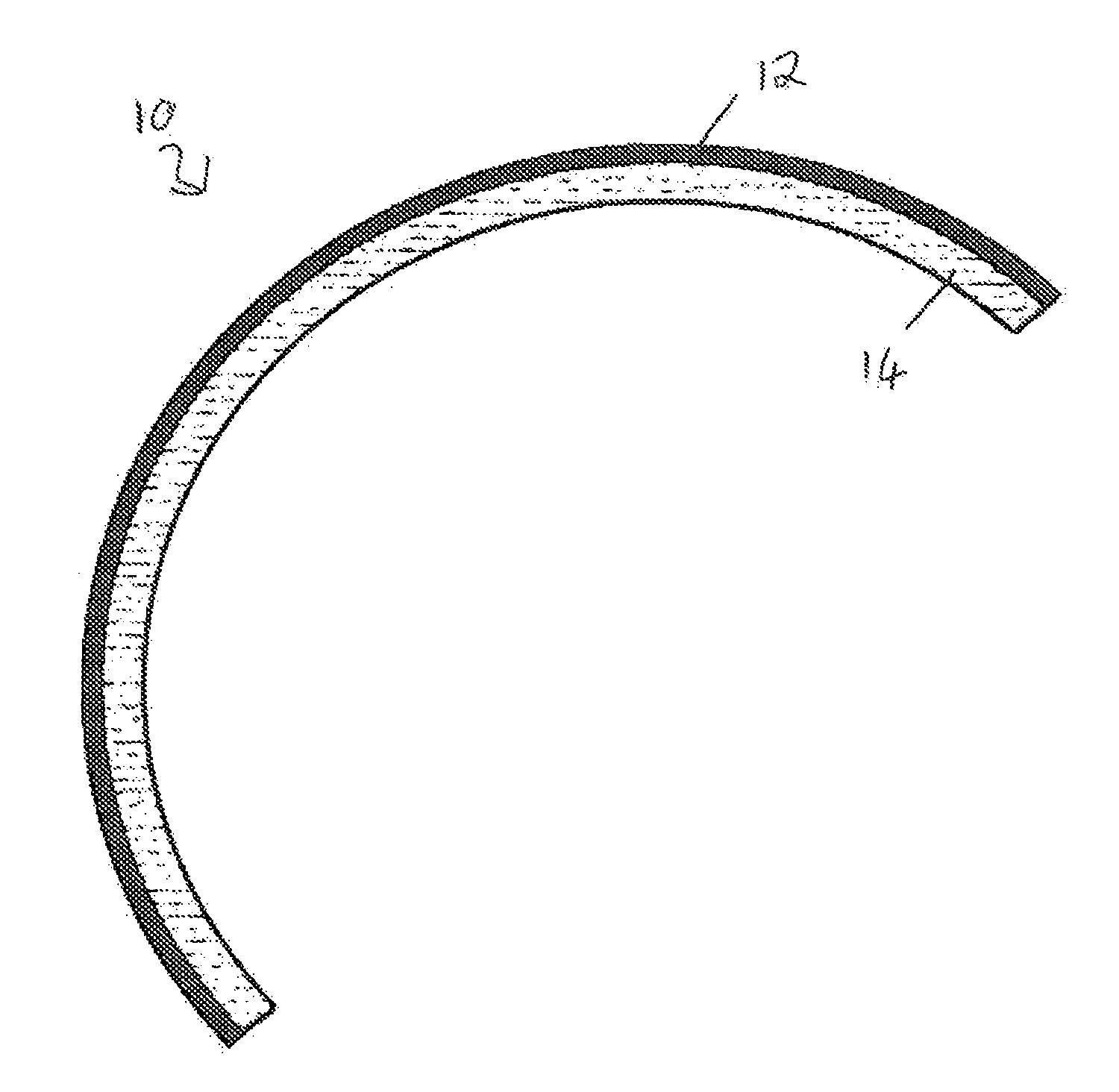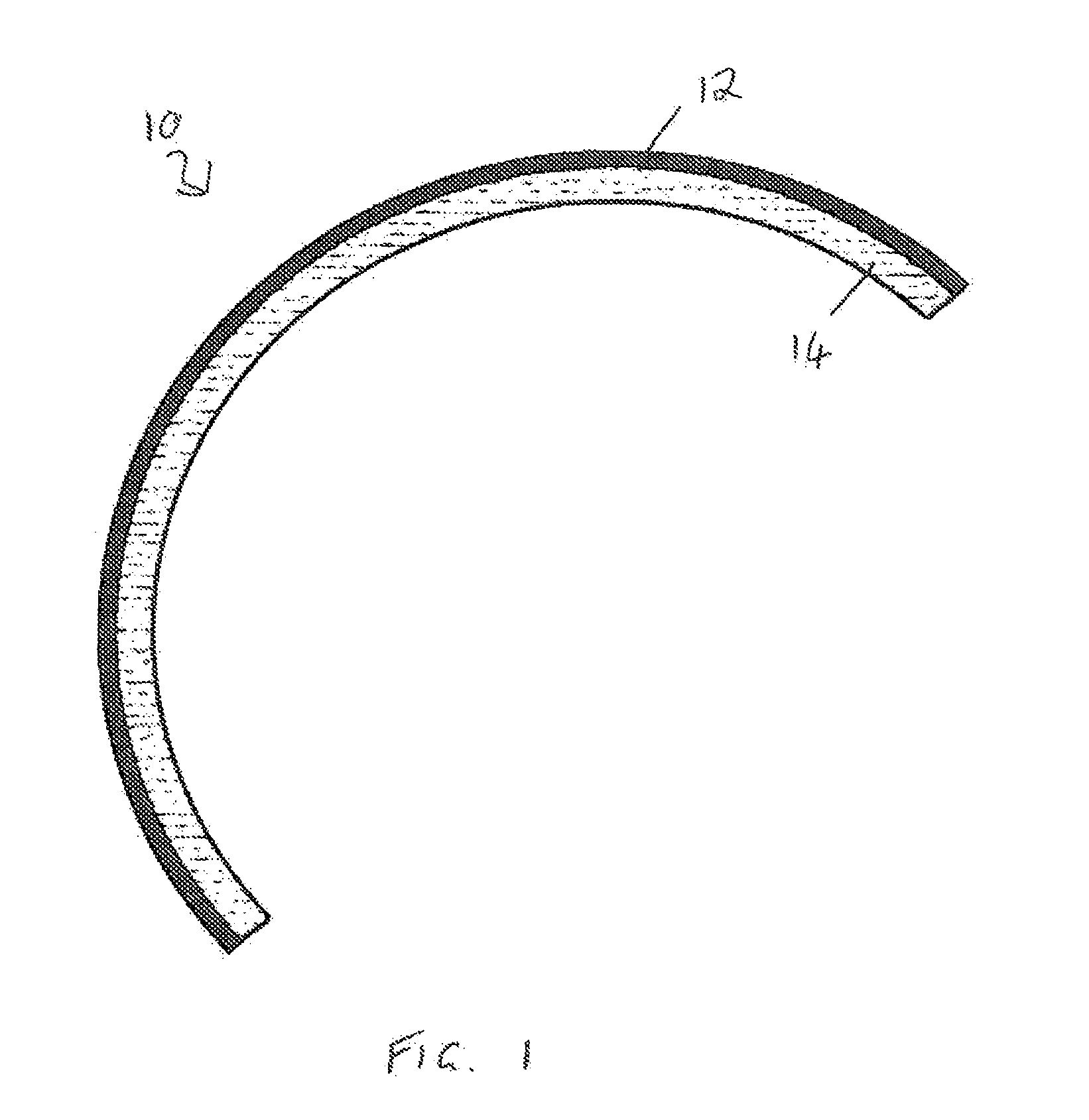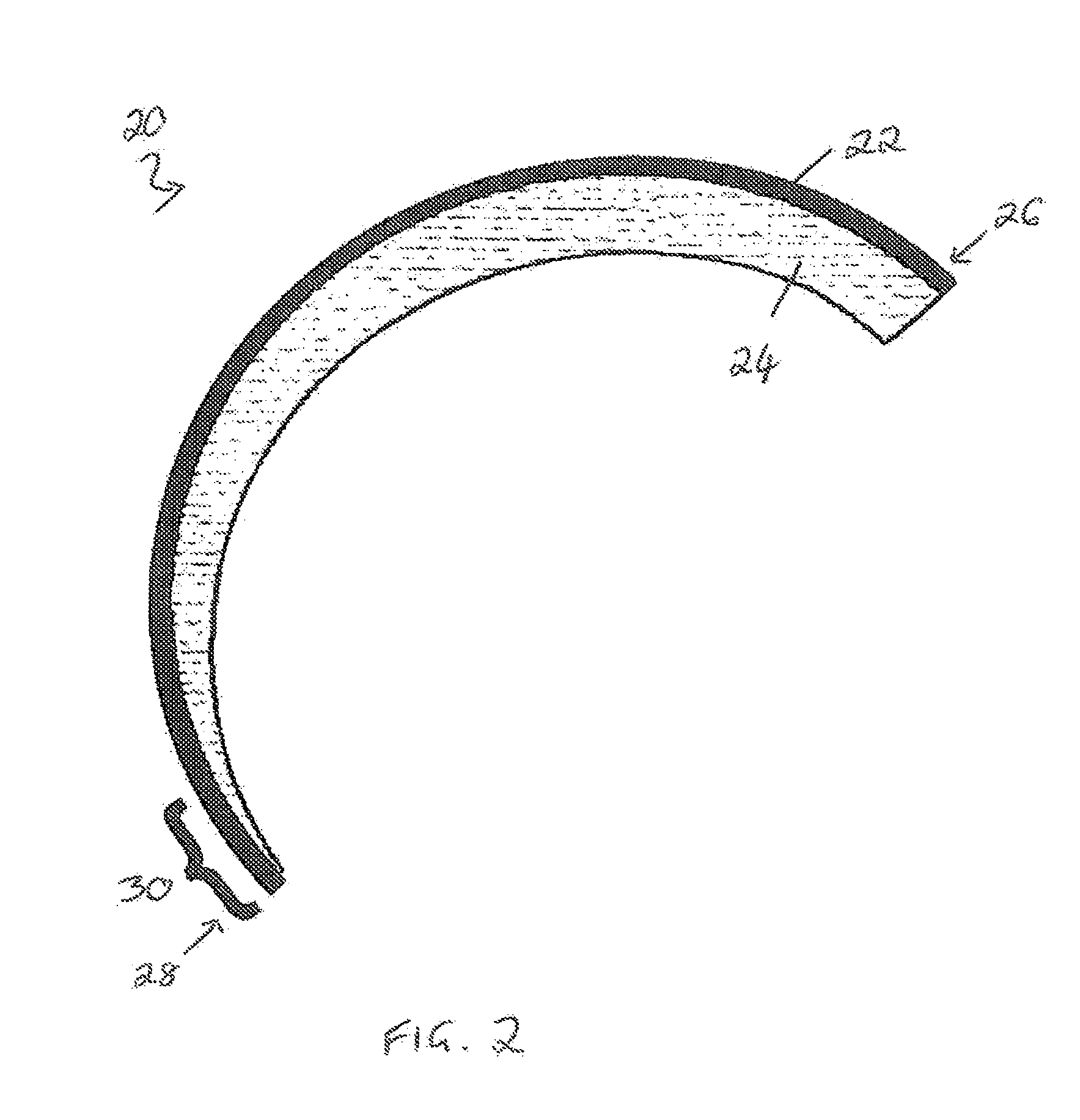Method of Forming a Polymer Component
a polymer and component technology, applied in the field of polymer components, can solve the problems of poor quality of oxidized polymer, deterioration of mechanical properties of polymer, etc., and achieve the effects of preventing oxidation in use, reducing the amount of oxidation of polymer, and high contact stress in us
- Summary
- Abstract
- Description
- Claims
- Application Information
AI Technical Summary
Benefits of technology
Problems solved by technology
Method used
Image
Examples
Embodiment Construction
[0288]With reference to FIG. 1, there is illustrated a central cross-section of a proposed acetabular cup prosthesis 10 having a relatively thin (e.g. 1 mm) hemi-spherical metal outer shell 12 and a co-centred relatively thick (e.g. 2 mm) hemi-spherical polymer inner liner 14. In this case, the polymer inner liner or shell 14 is glued by an adhesive (not shown) to the inner surface of the metal outer shell 12. It will be noted that inner diameter to outer diameter difference of the cup 10 is 6 mm—the cup 10 having a thickness of 3 mm at each side.
[0289]While such a thin-walled acetabular cup prosthesis is desirable for hip resurfacing (where only a minimal amount of bone is removed to accommodate the implant), it has been proposed that insertion of the cup using a traditional 2 mm press-fit technique would lead to uncontrolled distortion and damage to the cup. Various aspects of the present invention therefore aim to address this problem.
[0290]FIG. 2 shows a central cross-section of...
PUM
| Property | Measurement | Unit |
|---|---|---|
| diameter | aaaaa | aaaaa |
| diameter | aaaaa | aaaaa |
| diameter | aaaaa | aaaaa |
Abstract
Description
Claims
Application Information
 Login to View More
Login to View More - R&D
- Intellectual Property
- Life Sciences
- Materials
- Tech Scout
- Unparalleled Data Quality
- Higher Quality Content
- 60% Fewer Hallucinations
Browse by: Latest US Patents, China's latest patents, Technical Efficacy Thesaurus, Application Domain, Technology Topic, Popular Technical Reports.
© 2025 PatSnap. All rights reserved.Legal|Privacy policy|Modern Slavery Act Transparency Statement|Sitemap|About US| Contact US: help@patsnap.com



